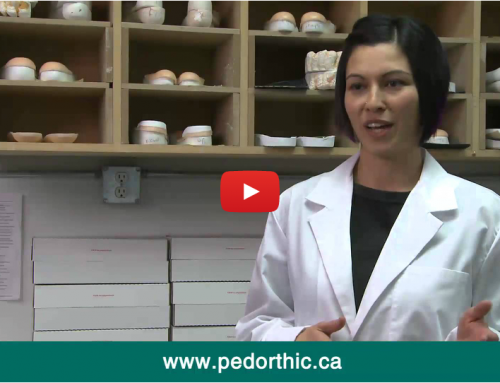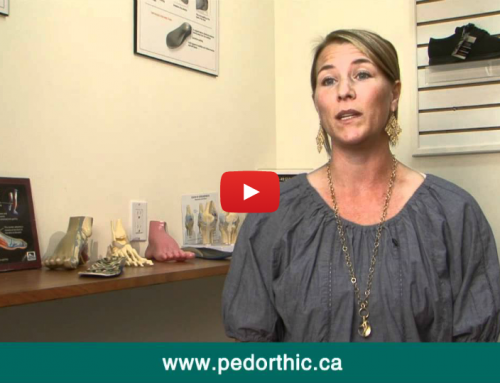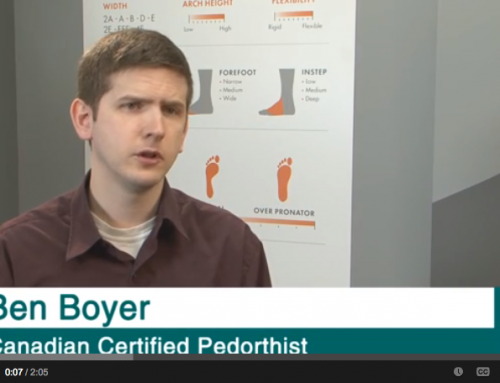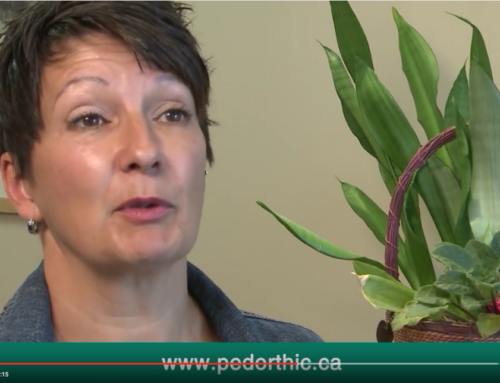Custom foot orthotics are used to support and align the foot in the lower limb. By custom making an orthotic, we’re more able to precisely and effectively achieve that by making it from a mold of the patient’s foot and by tailoring the materials to their needs. Canadian Certified Pedorthists are one of the only foot experts trained in the manufacturing of foot orthotics. Learn more below about how orthotics are made.
The first step in making a custom made orthotic is taking a cast of the foot. The pedorthist takes a three dimensional imprint of the foot to capture every conture and the shape of the foot. It’s critical during this step that the pedorthist maintains the foot in a proper alignment and position.
Pedorthists employ a variety of casting techniques and technologies to make an accurate impression of the foot. One method is using a foam box. We create a 3D mold of the foot by gently placing the patient’s foot in a foam box to capture an imprint. Another popular method is plaster slipper casting where plaster is applied to a patient’s foot and then once dried it’s pulled away to reveal the 3D model. And wax STS slipper casting, computer modeling and contact digitization are also very accurate and effective methods as well.
Once the pedorthist has captured the 3D model of the foot, he’ll take that model and modify it to further correct or align the foot. Once the cast is set the pedorthist will determine which materials to make the orthotic from. This might range anywhere from a very soft accommodative fom for certain conditions to a very rigid hard thermoplastic or carbon fibre material for other conditions. Once the material has been selected, the pedorthist will heat that in a convection oven and the material will be then vacuum pressed over the cast of the foot to form the shell for the orthotic.
After the material has cooled that shell is taken and trimmed and grinded dried down to finish the orthotic. Once the orthotic is fabricated the pedorthist will have the patient in for a fitting appointment. At this time it will be ensured that the orthotic fits the patient’s shoes and any fine-tuning adjustments will be done to make sure that it is comfortable. Several weeks afterwards the pedorthist will follow up with the patient to ensure that the orthotic is comfortable and managing their condition well.
At this point again any fine-tuning adjustments will be made to ensure a perfect fit.




